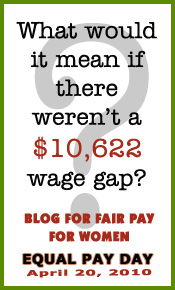 Check Out this article at Beautyschooled:
Check Out this article at Beautyschooled:I just spent 20 minutes trying to figure out the gender wage gap for salon workers, and the best I can find is a Bureau of Labor Statistics chart that says 268,000 female “hairdressers, hair stylists and cosmetologists” earned a median income of $413 per week (just under $22,000 per year) in 2009, but that data was not recorded for their male counterparts because there are less than 50,000 male hair stylists in the country (and BLS doesn’t track data on occupation segments that small). This fact does not surprise me because there is not one male student currently enrolled in all of Beauty U...
...And there’s another, more insidious and more widespread way that the beauty industry contributes to the wage gap: What Naomi Wolf calls “the professional beauty qualification” or PBQ, where all manner of jobs require women to look and dress a certain way in order to maintain their employment.
From The Beauty Myth, pages 52-53:
Help strengthen regulations to prevent discriminatory pay practices and discrimination of all types:Urban professional women are devoting up to a third of their income to “beauty maintenance” and considering it a necessary investment. [...] The few women who are finally earning as much as men are forced, through the PBQ, to pay themselves significantly less than their male counterparts take home. It has engineered do-it-yourself income discrimination.
 Support the Paycheck Fairness Act!
Support the Paycheck Fairness Act!H.R. 12, S. 182 (111th Congress)
The Paycheck Fairness Act, introduced in both the House (H.R. 12) and the Senate (S. 182) and passed by the House on Jan. 9, 2009, would update and strengthen the Equal Pay Act (EPA) of 1963. The Act would deter wage discrimination by closing loopholes in the EPA and barring retaliation against workers who disclose their wages. The bill also allows women to receive the same remedies for sex-based pay discrimination that are currently available to those subject to discrimination based on race and national origin.

No comments:
Post a Comment